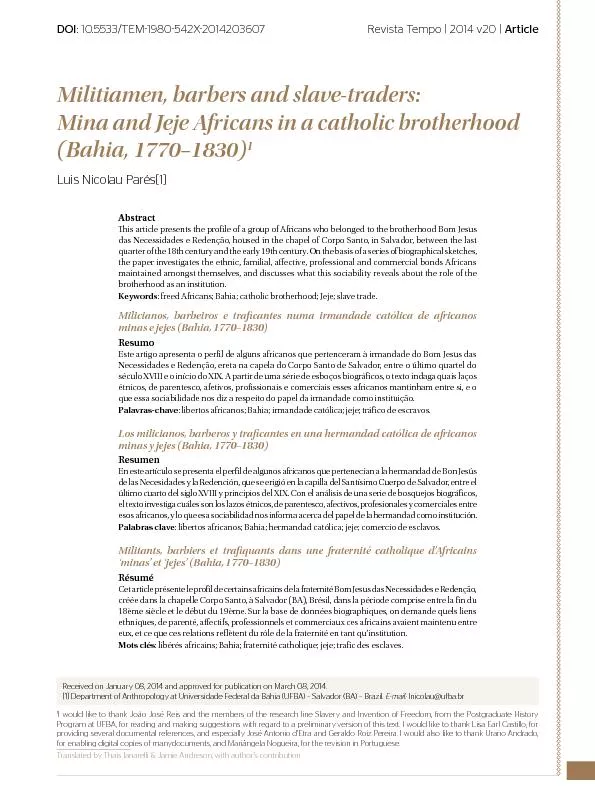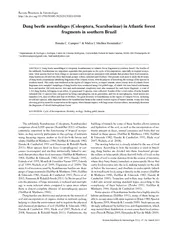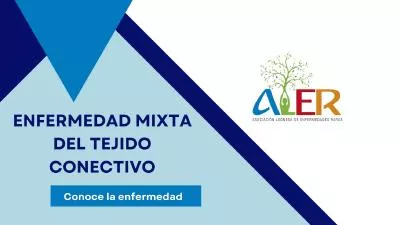PDF-Revista Tempo | 2014 v20 |
Author : faustina-dinatale | Published Date : 2016-06-26
DOI 105533TEM1980542X2014203607 Article Militiamen barbers and slavetraders Mina and Jeje Africans in a catholic brotherhood Bahia 17701501830 1 Luis Nicolau Par
Presentation Embed Code
Download Presentation
Download Presentation The PPT/PDF document "Revista Tempo | 2014 v20 |" is the property of its rightful owner. Permission is granted to download and print the materials on this website for personal, non-commercial use only, and to display it on your personal computer provided you do not modify the materials and that you retain all copyright notices contained in the materials. By downloading content from our website, you accept the terms of this agreement.
Revista Tempo | 2014 v20 |: Transcript
Download Rules Of Document
"Revista Tempo | 2014 v20 |"The content belongs to its owner. You may download and print it for personal use, without modification, and keep all copyright notices. By downloading, you agree to these terms.
Related Documents














![[Air Quality Forecasting] Breakout Report 1st TEMPO Applications Workshop Huntsville,](https://thumbs.docslides.com/1067409/air-quality-forecasting-breakout-report-1st-tempo-applications-workshop-huntsville-al.jpg)